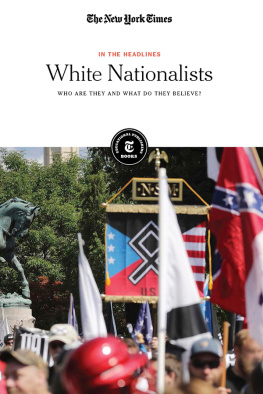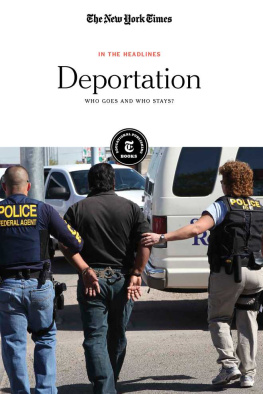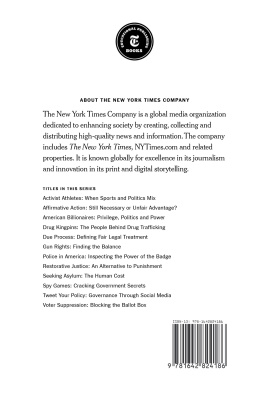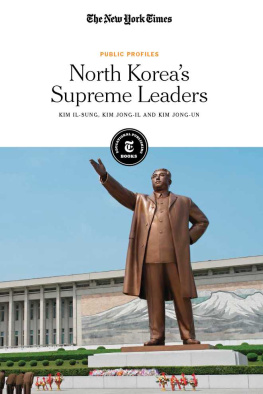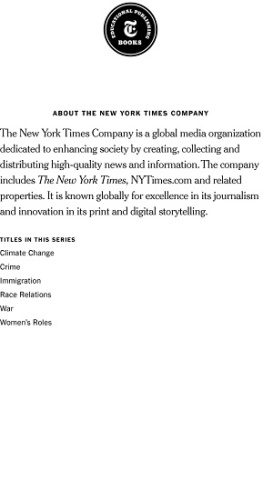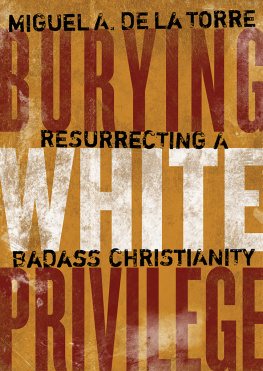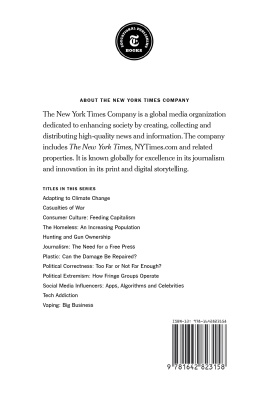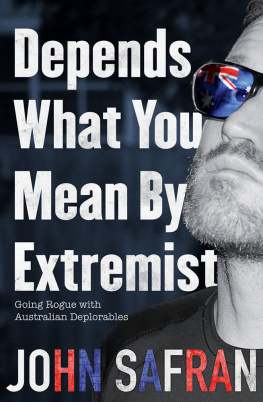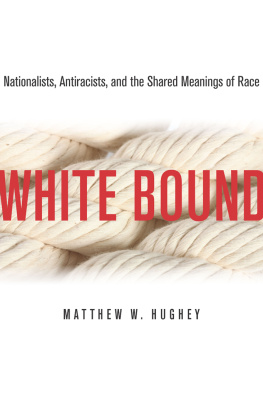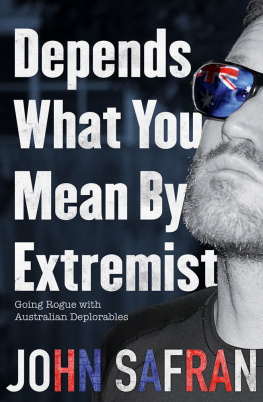Published in 2020 by New York Times Educational Publishing in association with The Rosen Publishing Group, Inc. 29 East 21st Street, New York, NY 10010
Contains material from The New York Times and is reprinted by permission. Copyright 2020 The New York Times. All rights reserved.
Rosen Publishing materials copyright 2020 The Rosen Publishing Group, Inc. All rights reserved. Distributed exclusively by Rosen Publishing.
First Edition
The New York Times
Alex Ward: Editorial Director, Book Development
Phyllis Collazo: Photo Rights/Permissions Editor
Heidi Giovine: Administrative Manager
Rosen Publishing
Megan Kellerman: Managing Editor
Julia Bosson: Editor
Greg Tucker: Creative Director
Brian Garvey: Art Director
Cataloging-in-Publication Data
Names: New York Times Company.
Title: White nationalists: who are they and what do they believe? / edited by the New York Times editorial staff.
Description: New York : New York Times Educational Publishing, 2020. | Series: In the headlines | Includes glossary and index.
Identifiers: ISBN 9781642822182 (library bound) | ISBN 9781642822175 (pbk.) | ISBN 9781642822199 (ebook)
Subjects: LCSH: White supremacy movementsUnited States Juvenile literature. | Hate groupsUnited StatesJuvenile literature. | RacismJuvenile literature.
Classification: LCC E184.A1 W458 2020 | DDC 305.800973dc23
Manufactured in the United States of America
On the cover: The statue of Confederate General Robert E. Lee stands behind a crowd of hundreds of white nationalists, neo- Nazis and members of the alt-right during the Unite the Right rally in Charlottesville, Va., Aug. 12, 2017; Chip Somodevilla/ Getty Images.
Introduction
IN THE SUMMER of 2017, the college town of Charlottesville, Va., became embroiled in a debate over a statue of General Robert E. Lee, one of the many Confederate monuments in Southern cities that had been slated for removal. In response, a group of white nationalists organized a demonstration they called the Unite the Right rally. On Aug. 11, they descended on the town, holding torches and chanting Blood and Soil and Jews will not replace us. The groups were met by police as well as counterprotesters, leading to violent altercations throughout the weekend that culminated in one white nationalist driving his car into a group of counterprotesters, killing a young woman.
The violence in Charlottesville gained national attention, filling the headlines of newspapers and dominating the conversation on news shows. Many Americans expressed shock, feeling taken aback at the idea that America might have such a prominent neo-Nazi presence so many years after the civil rights movement. This led journalists to investigate: Who are white nationalists? Where do they come from? What separates them from the Ku Klux Klan and other white supremacist groups? And what exactly do they believe?
The term white nationalist refers to a group of far-right activists who believe white people are superior to people of other races and who support racial segregation. White nationalists desire to create a white ethnostate that is built on common heritage and a white national identity. They adhere to theories of white racial superiority that have been entirely debunked by science, and see reports that America is on its way to becoming a white minority country as a sign of an impending race war that will require them to militarize for self-protection.

White supremacists march toward Lafayette Square for the Unite the Right rally in Washington, Aug. 12, 2018, to mark the anniversary of their Charlottesville, Va. rally the previous year.
In recent years, white nationalists have made headlines following horrifyingly violent hate crimes. Dylann Roof, the young man who murdered nine parishioners at a historically black church in Charleston, S.C., was influenced by white nationalist rhetoric he encountered on online forums. Robert Bowers, the man who opened fire at the Tree of Life synagogue in Pittsburgh, Pa., taking the lives of nine, shared his views on Gab, a website that hosts forums for many fringe groups. White nationalism has become the greatest force of domestic terrorism today.
The leaders of the white nationalist movement represent the different strains of white supremacy present in American culture. There is Richard B. Spencer, the director of the National Policy Institute, who famously led an audience in a Hail Trump! salute following the 2016 election. There is David Duke, a former grand wizard of the Ku Klux Klan, who has made his own forays into politics. And then there is Don Black, the operator of the white nationalist website Stormfront.org, whose son, Derek Black, once his acolyte, made headlines by sharing his own conversion against white nationalism.
Part of the recent surge in white nationalism comes from the candidacy and election of Donald Trump. Throughout his campaign, Trump invoked the language of white nationalism, giving followers hope that his beliefs echoed theirs. He surrounded himself with advisers such as Steve Bannon, whose Breitbart News website gives a platform to the alt-right, an association of extreme right-wing groups, including many white nationalists.
Those concerned about the spread of white nationalism found cause to worry after Charlottesville, when the president refrained from criticizing the alt-right groups, instead choosing to condemn the violence that took place on both sides. Since then, the president has been slow to criticize racially motivated hate crimes and has put forward policy positions that echo the demands of white nationalists.
The articles in this book trace the origins of the white nationalist movement, examining its beliefs as well as its growing base of adherents. Reporters embedded themselves in white nationalist communities, scrutinized their means of operation and analyzed the foundations of their beliefs. What results is a portrait of how white nationalism has spread through national politics and how this has led to outbreaks of violence.
In 2018, protesters organized a second Unite the Right rally. Officials prepared themselves for a repeat of the previous years violence, but the day passed peacefully, with counterprotesters greatly outnumbering the marching white nationalists. Whether this was a momentary setback or a sign of a shifting tide, only time will tell.
CHAPTER 1
White Nationalists and Their Beliefs
Who counts as a white nationalist, and what do they believe? White nationalism is a belief that sees whiteness as an ethnicity and seeks to create a white ethnostate in order to advance a white national identity. Built upon white supremacy and racism, white nationalists attempt to spread their beliefs through rallies, public talks and Internet platforms. As demographics shift and whites become a minority, white nationalists see the need to position themselves on the defensive, preparing for a race war.
White Supremacists Extend Their Reach Through Websites
BY MICHAEL WINES AND STEPHANIE SAUL | JULY 5, 2015
IN LATE JUNE, as much of the nation mourned the killing of nine parishioners in a Charleston, S.C., church, The Daily Stormer, a white supremacist website, was busy posting articles on a different issue: black crime against white people. Adolescent Ape Jailed for Murdering White Man Out of Boredom, one headline blared.

